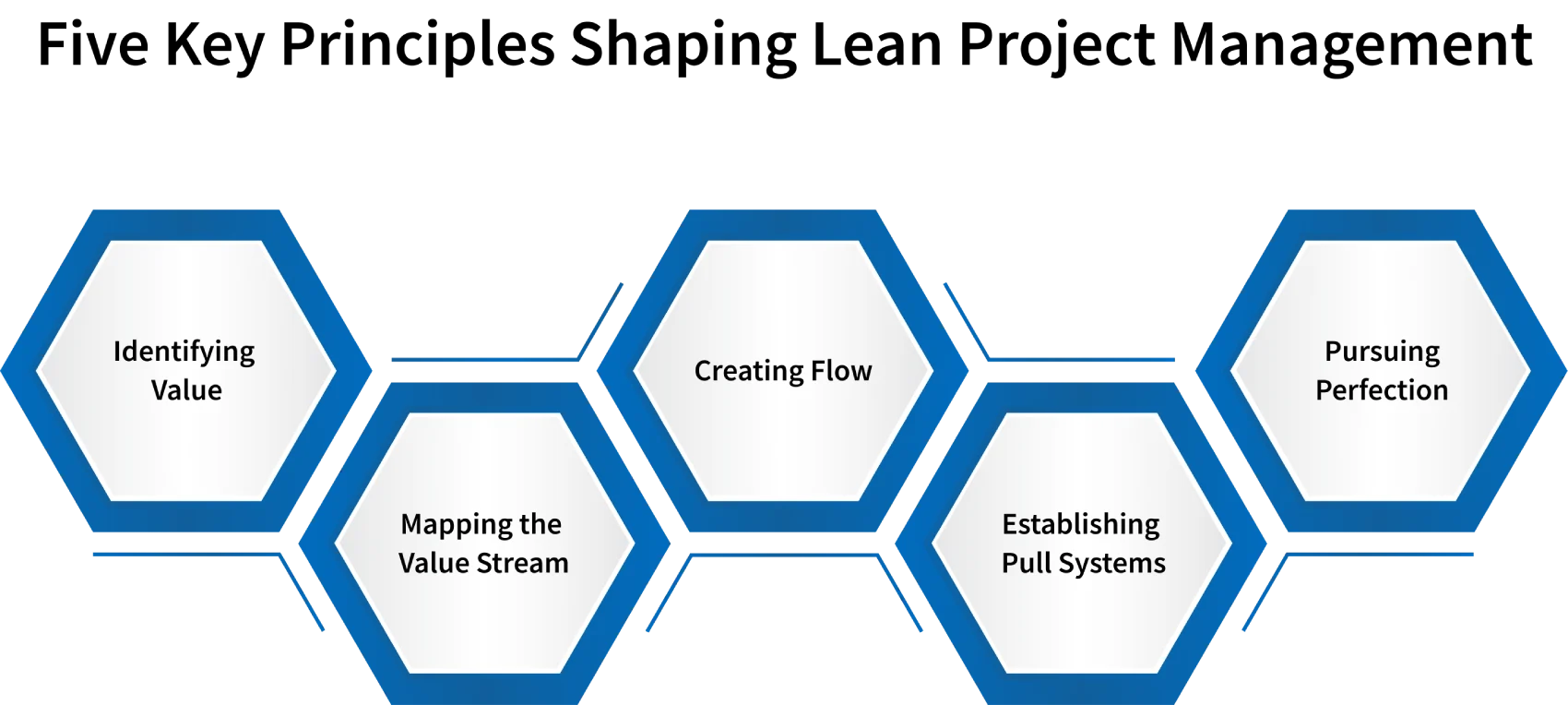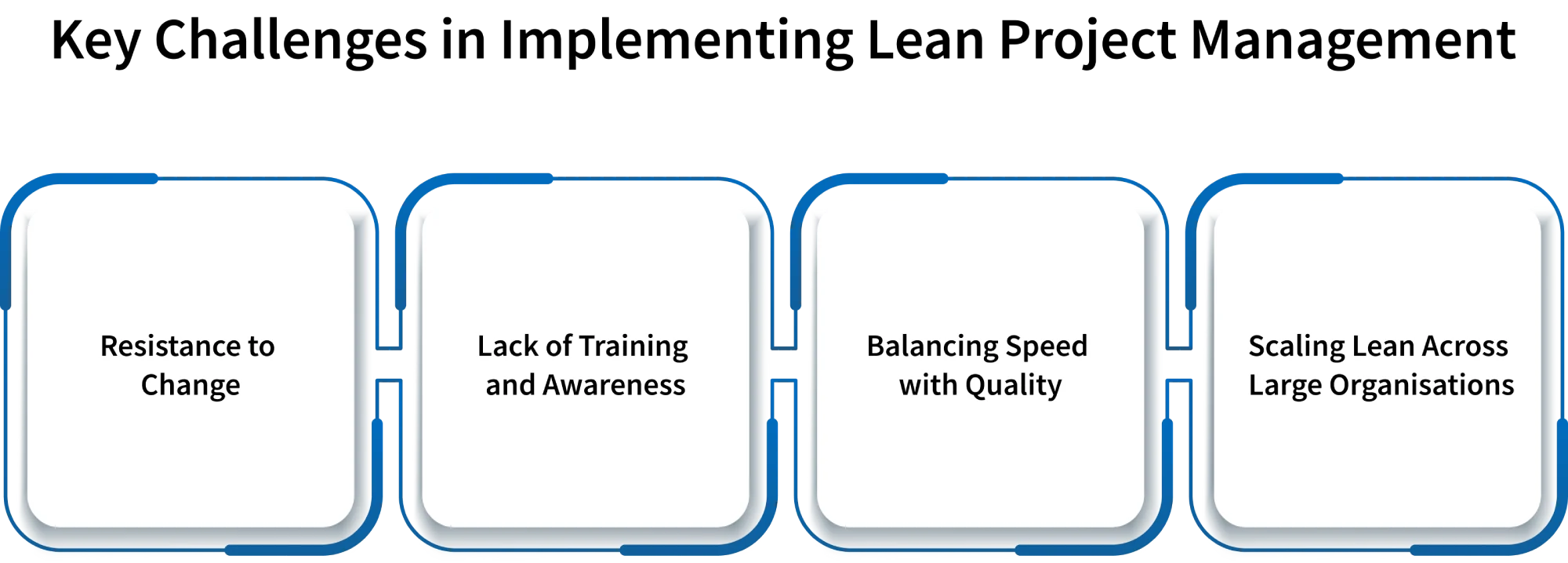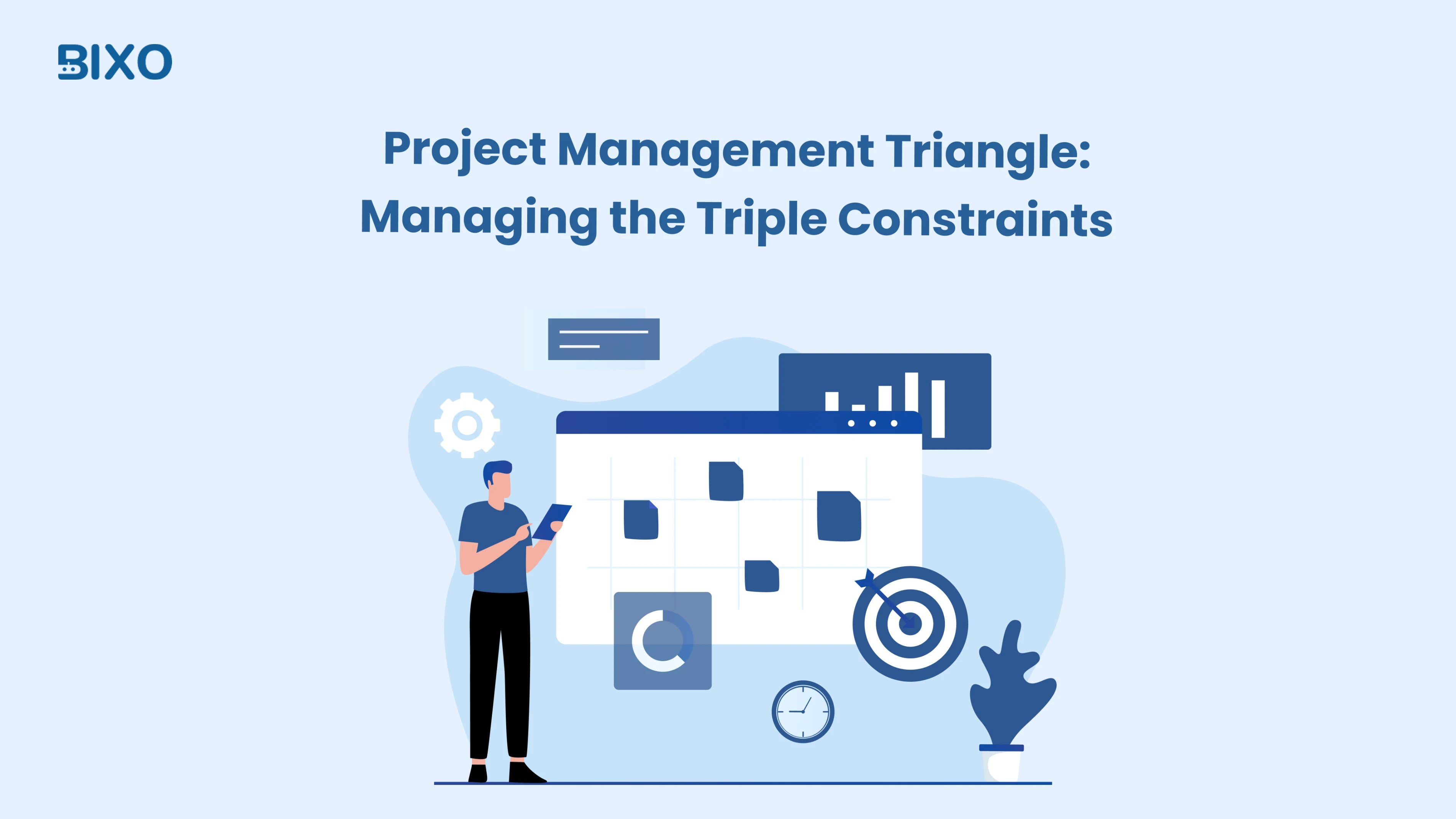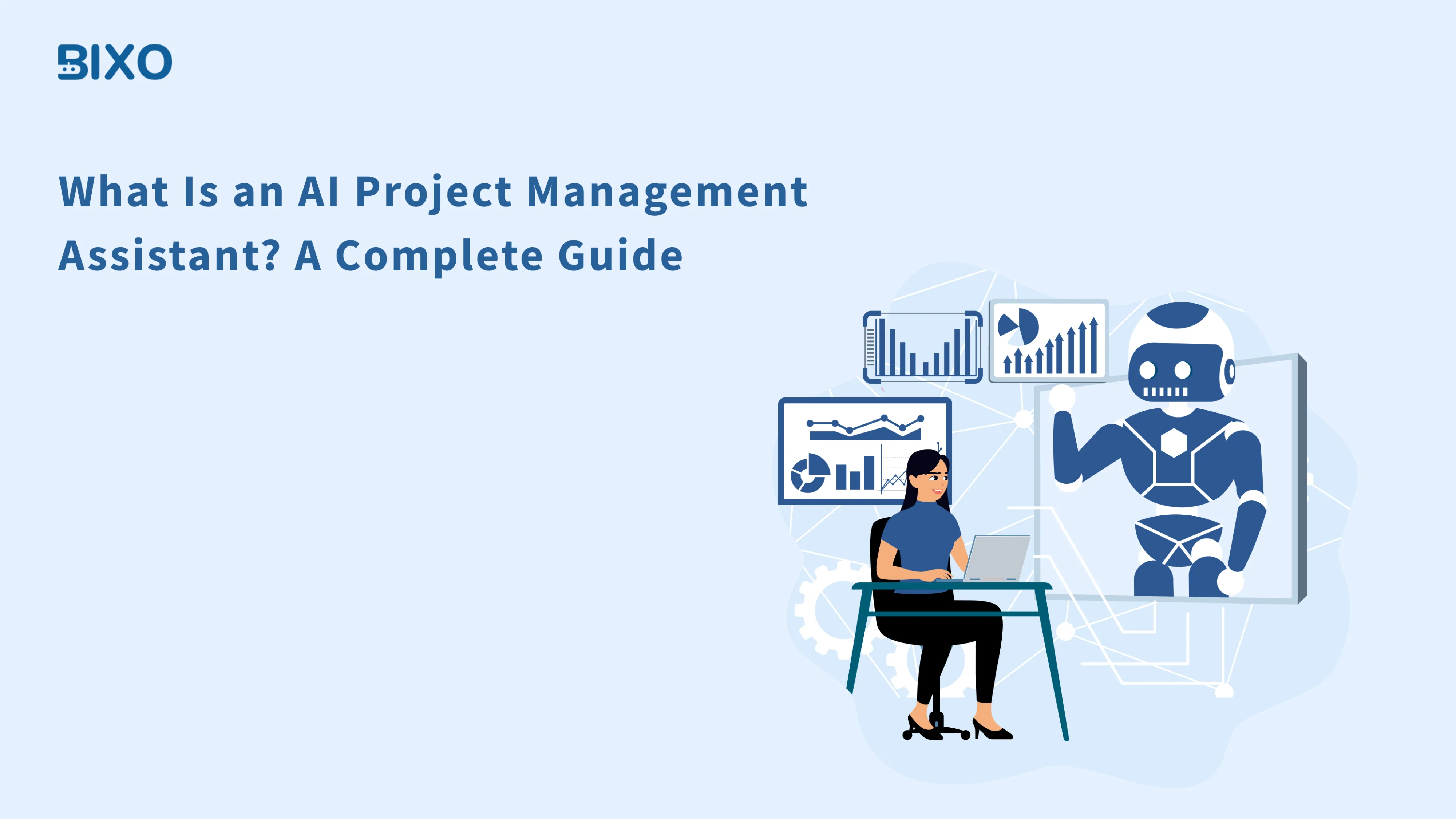
Table of Content
Focus on what matters. BIXO handles the rest!

When you hear the term lean project management, you might wonder what it really is and why so many companies use it. Simply, lean project management is about getting more done with fewer resources by cutting out waste, focusing on what adds value, and keeping the workflow smooth. Instead of making tasks complicated, it gives you a clear way to work smarter, finish projects faster, and keep quality high. If you’ve ever asked yourself what lean project management means or how it works, this guide will explain the principles, tools, and best practices step by step.
What Is Lean Project Management?
Lean project management is about using lean ideas to plan and complete projects more efficiently. It doesn’t treat every task the same. Instead, it focuses on what’s truly important, maps out the steps needed, and removes anything that wastes time or slows things down. This way of working mixes organised project planning with practices like continuous improvement, keeping work flowing smoothly, and doing things only when needed. The outcome is a way of thinking and working that keeps resources on track, teams coordinated, and results consistently strong.
How Do the Five Key Principles Shape Lean Project Management?
Lean project management isn’t just about cutting out work that doesn’t help the project or slows things down. It’s about setting up a way of working where every step, task, and decision actually adds value. By following the five main principles, your projects can run more smoothly, be easier to predict, and get done more efficiently. Each principle helps you focus on what’s important, improve team performance, and finish work faster without lowering quality. Here’s how these principles work practically.

Identifying Value
The first step in lean project management is finding out what is really important for your project. You should focus on your main goal and what your stakeholders care about most. By knowing what adds value, you can give prioritise tasks that actually help achieve results and remove work that does not matter. This keeps your team focused, avoids wasted effort, and makes sure every action moves the project forward.
Mapping the Value Stream
Once you know what truly adds value, the next step is to see how work actually moves from start to finish. This is called the value stream. By outlining each step, you can quickly spot delays, bottlenecks, or unnecessary tasks that slow down progress. Mapping the value stream gives you a clear view of where improvements are needed and shows how to make your workflow more efficient, which is the main focus of lean project management.
Creating Flow
Once you have outlined the value stream, the next step is to make the work move smoothly. This means tasks move easily from one step to the next without any delay or need to do them again.
Establishing Pull Systems
Pull systems enable you to manage work on the basis of real demand as opposed to guesswork. Rather than imposing tasks on teams, work is pulled through the process when capacity permits. This avoids overloading, minimises bottlenecks, and ensures that each step is done at the appropriate time. You make your projects more responsive, flexible, and aligned to the real priorities by using pull systems.
Pursuing Perfection
Lean project management is not about trying to get everything perfect the first time. It is all about constant improvement. Each project will provide you with wellbeing insights on how to minimise waste, enhance the processes, and achieve better results in the future. In the pursuit of perfection, you develop a learning culture, foster feedback, and develop your workflows in a smarter way with every update. Over time, small changes accumulate into significant gains in efficiency and quality.
Which Tools and Techniques Support Lean Project Management?
Lean project management works best when you use tools that make your work clear and easy to manage. The right methods help you focus on what’s important, remove unnecessary steps, and keep your projects moving smoothly. Using these tools lets you make better decisions, handle problems faster, and get consistent results. Here are some key tools and techniques to make lean project management work in your projects.

Kanban Boards
Kanban boards show all your tasks in one place. You can see what’s in progress, what’s waiting, and what’s done. This makes it easier to decide what to work on first, avoid delays, and adjust when priorities change. Using kanban helps you keep your work organised and clear.
Value Stream Mapping
This helps you see the whole process of work from beginning to end. It shows delays, extra steps, or places where mistakes can happen. This way, you can simplify the process and focus only on what really matters, making your work faster and reducing waste.
5S Method
The 5S method helps keep work areas organised and efficient. It focuses on sorting items, arranging them neatly, keeping everything clean, following standard steps, and sticking to these habits. This makes it easier to find what you need, avoid mistakes, and work more smoothly on a project.
PDCA Cycle (Plan-Do-Check-Act)
This cycle is an easy way to keep improving your work. First, you plan what to do, then do it, check the results, and make changes based on what you learn. Using this cycle helps you find problems early, fix them fast, and keep improving how you do projects. It fits well with lean project management to make each step more efficient.
Visual Management Tools
To keep track of a project, dashboards, charts, and colour codes make it easy to see what’s going on right away. They allow you to follow progress, identify risks, and indicate what is most important. These tools used in lean project management keep everyone updated, enable you to make quicker decisions, and the team works together efficiently.
How Do You Put Best Practices into Action for Lean Project success?
Lean project management works best when it’s part of your everyday work, not just a list of tools or steps to follow. Following best practices assists you in cutting out waste, such as tasks, time, or resources that do not add value. They also keep work moving without delays and make sure projects deliver real results. By focusing on steady improvement, teamwork, using data wisely, and regular reviews, you create a system where projects run smoothly and deliver better results. Here are four simple practices that make lean project management more effective in real situations.

Encouraging a Culture of Continuous Improvement
Lean project management is all about always finding ways to do things better. You can build this habit by making small, regular improvements instead of waiting for big changes. When everyone looks for ways to cut waste, work faster, or improve quality, progress happens naturally. Over time, this approach makes your projects run more smoothly and keeps your workflow strong.
Supporting Teams and Working Together
Teamwork is very important in lean project management. When people can make decisions about their own work, they take responsibility and can solve problems in a faster way. Working together also helps ideas move freely, which tends to lead to better solutions and fewer errors. By encouraging open team communication and support within the team, you make work more productive and keep the project moving smoothly toward its project goals.
Using Data for Better Decisions
Lean project management depends on facts, not guesswork to make good decisions. Monitoring such crucial metrics as cycle time, team lead time, or resource utilisation helps you understand the actual performance of the project. Such data will assist you in identifying issues early and knowing trends and prioritising them before they become larger. Using data to guide decision-making increases the reliability of your project results and the efficiency of your processes.
Regular Feedback and Retrospectives
In lean project management, feedback is one of the easiest yet most effective methods. By regularly looking at what worked and what did not, you catch mistakes early and learn faster. Retrospectives give your team a chance to express their thoughts, point out team management challenges, and suggest improvements. These kinds of sessions keep everyone aligned, strengthen collaboration, and make each and every project run more smoothly than the last.
What Are the Biggest Challenges in Implementing Lean Project Management?
Using lean project management can change the way you work. It helps you cut waste, improve how work flows, and focus on what’s most important. But it’s not always easy. Even when the benefits are clear, some problems can make it harder to use and affect how well your projects do. Knowing these challenges in advance can help you plan better and make lean project management work for your team.

Resistance to Change
Changing how work is done can be hard. People usually prefer routines they know, even if they’re not the best. Lean Project Management asks you to rethink processes, focus on what really matters, and keep improving how tasks are done. This can make some people unsure or push back. To handle this, show how lean methods make work easier, less stressful, and give better results for everyone.
Lack of Training and Awareness
Lean project management works best when everyone understands the basics and knows how to use the tools, like mapping workflows or keeping work moving smoothly. If people aren’t trained or aware, they might use the methods wrong, miss chances to improve, or have trouble following processes. Giving clear instructions, simple examples, and easy-to-use resources helps everyone understand how to work effectively with lean practices.
Balancing Speed with Quality
In lean project management, it can be tricky to work fast without lowering quality. Lean focuses on getting things done efficiently, but going too fast can cause mistakes. The goal is to keep an eye on quality, check how things are going, and make small improvements along the way. This way, you can finish work quickly while still keeping it high quality.
Scaling Lean Across Large Organisations
Using lean project management in a small team is simple, but doing it across a big organisation is harder. Teams and departments often work differently, which makes it tricky to use the same approach everywhere. To make it work, keep communication clear, use consistent methods, and track results across all teams. Also, adjust practices to fit each area. This way, lean can grow across the organisation without losing its benefits.
Conclusion
Using lean project management helps you make work simpler, cut out extra steps, and focus on what really matters. By spotting value, keeping work flowing, and always looking for ways to improve, you can finish projects faster, make better choices, and keep quality high. Tools like BIXO , Kanban boards, value stream mapping, and the PDCA cycle, along with practices like regular feedback, teamwork, and using data, make your projects run smoothly and more efficiently. Lean project management helps you work smarter, waste less, and get better results.
FAQs
Lean project management helps teams work better by focusing on important tasks, cutting out extra steps, and making work flow smoothly. This reduces wasted effort and improves communication, so projects get done faster without lowering quality.
Yes, it can. Small projects can adopt it easily, but larger organisations need clear communication, consistent methods, and adjusted practices. The Lean principles stay the same, but bigger projects need more coordination and careful tracking.
You can measure the success of lean project management by looking at things like how long tasks take, how resources are used, and the quality of the work. Regular feedback, team reviews, and making improvements show if projects are running more smoothly, giving value, and reaching their goals.
The first step in using lean project management is to figure out what really matters in your project. Look at your tasks, keep the ones that add value, remove anything unnecessary, and make small improvements step by step so the team can adjust and start working in a lean way.
Get a demo of BIXO
Recommended Blogs

Project Management Triangle: Managing the Triple Constraints
Master the project management triangle by balancing scope, cost, and time with simple strategies that drive successful outcomes every time.
 Jahnavi Chintakrindhi |
Jahnavi Chintakrindhi |
 Oct 13, 2025
Oct 13, 2025


